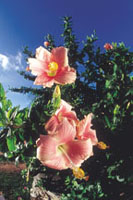My Travel Gear
10 Accessories To Improve Your 35mm Images
Never before has 35mm photography
been so easy, so exciting, and so much fun. What's creating all
the hoopla in this time-proven format--the choice of most photojournalists,
travel photographers, and amateur shooters? For one thing, just about
all the major camera manufacturers have introduced new 35mm AF SLRs
in the past year or so. These new cameras offer faster focusing, more
sophisticated exposure metering, and easier operation. What's
more, new SLRs are more ergonomically designed--which means they fit
in your hands more comfortably. |
|||
Tripods. A
tripod does more than just steady a camera, which is sometimes needed
when shooting in low light, when making long exposures, and when shooting
with telephoto lenses. A tripod slows down the shooting process--and the
photographer. In this fast-paced world, however, slowing down can be a
good thing. It can add to the enjoyment of the picture taking experience.
What's more, when a camera is mounted on a tripod and the photographer
looks through the viewfinder, he or she can take lots of time searching
for important, as well as distracting, elements in a scene. The result
of this added viewing time often can make for a more effective composition. |
|||
Accessory Flash.
Sure, many SLRs feature built-in flashes that can do the job. However,
for serious shooters, an accessory flash is a must. An accessory flash
offers more flash power, so you can take pictures of subjects at greater
distances. Other advantages: Most flash units feature swivel heads for
bounce lighting (which softens the light). Some models even offer control
over flash output (over and under the automatic TTL setting) for fine-tuning
flash exposure to individual creative needs. |
|||
Digital Darkroom Programs.
In '90, I attended a meeting at which commercial photographer Jody
Doyle was speaking. One of his comments: "If a professional is not
into digital imaging, he's dead." |




































